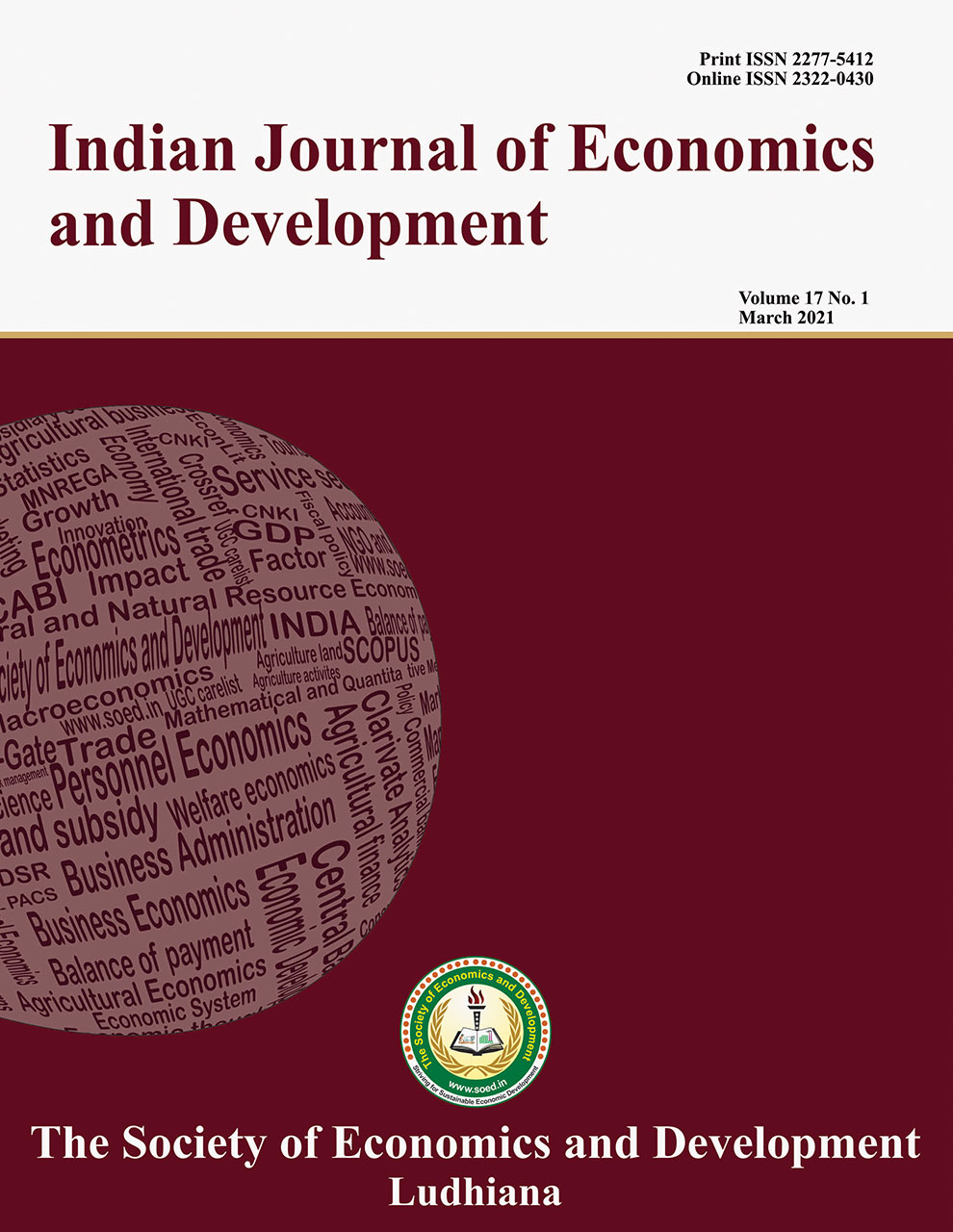Comparative Economics of Tomato Cultivation under Protected versus Open-field Conditions in Mid-hills of Himachal Pradesh

Price: ₹ 500
Author: Kanika Mehta*, J.S. Guleria, and Rajesh Kumar Thakur
Author Address: Department of Agricultural Economics, Extension Education & Rural Sociology CSK Himachal Pradesh Krishi Vishvavidyalya, Palampur-176062 (HP) *Corresponding author’s email: kanika.mehta9315@gmail.com
Keywords: Constraints, costs and returns, open-field cultivation, protected cultivation.
JEL Codes: O13, Q13, Q18.
Abstract
The present study pertained to the comparative economic analysis of tomato cultivation under-protected and open-field conditions in the mid-hills of Himachal Pradesh. The study was based on primary data collected through a survey method for the agricultural year 2015-16. The farmers realized 155.34 percent higher yield of tomato under protected conditions in comparison to the open-field conditions. Moreover, the sales price received by polyhouse growers was also 50 percent higher than that of the produce from the open-fields. The gross and net returns over total and variable costs were observed as higher under protected conditions (about 283, 47 and 300 percent, respectively) in comparison to the open-field conditions, thus making it a profitable venture. Cobb-Douglas production function was used to determine the factors affecting the yield of tomato under both the conditions. The use of FYM was found to be the most important variable and showed a significantly positive relationship with the yield of tomato under-protected and open-field conditions. Garrett ranking technique was used to analyze the severity of constraints faced by tomato growers. The constraints were divided into five categories namely, input, financial, technical, educational, and marketing constraints. The unavailability of improved varieties and skilled labour, high cost of improved varieties, lack of awareness regarding the high yielding and resistant varieties, lack of confidence, lack of storage facilities were found to be of highest severity under the five stated constraints, respectively.
Description
Indian Journal of Economics and Development
Volume 16 No. 1, 2020, 104-110
DOI: https://doi.org/10.35716/ijed/19108
Indexed in Clarivate Analytics (ESCI) of WoS
NAAS Score: 4.82
UGC Approved: UGC Care List Group II
Kanika Mehta*, J.S. Guleria, and Rajesh Kumar Thakur
Department of Agricultural Economics, Extension Education & Rural Sociology
CSK Himachal Pradesh Krishi Vishvavidyalya, Palampur-176062 (HP)
*Corresponding author’s email: kanika.mehta9315@gmail.com



